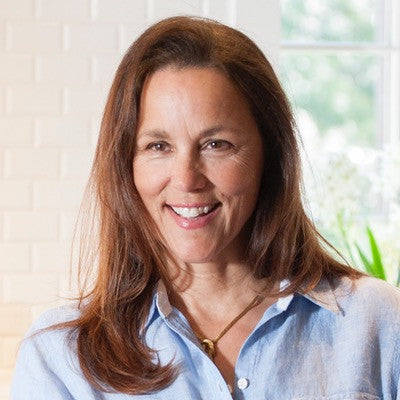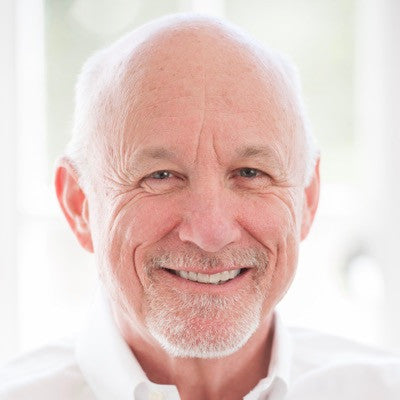Your Cart is Empty
 Kristin Lende Frey: I grew up in the 1970s in the bucolic countryside of the Hudson River Valley. We had a small sustainable farm and a single Holstein cow named Tranquility. It was my responsibility to take care of our cow which meant cleaning her stall, taking her out to graze, feeding, watering and of course the daily milking‐morning and night, through winter storms and hot humid summers.
Kristin Lende Frey: I grew up in the 1970s in the bucolic countryside of the Hudson River Valley. We had a small sustainable farm and a single Holstein cow named Tranquility. It was my responsibility to take care of our cow which meant cleaning her stall, taking her out to graze, feeding, watering and of course the daily milking‐morning and night, through winter storms and hot humid summers.
All I ever needed to know about hard work and responsibility came from taking care of that cow. Along with the drudgery and strict routine, came many delights: a lovable beast who was the center of our lives and endless amounts of milk, cream, homemade butter, yogurt and ice cream! I grew up appreciating pure, raw unadulterated food sourced straight from the land around me.
At the age of 21, I left this comforting world behind and moved overseas, first to France and then Switzerland. I was swept up by academia, and pursued degrees in both French and German and then Comparative Literature. Alongside my language and literature studies, I began to develop a deep and lifelong appreciation for European cuisine. I frequently experimented with local ingredients and classic old world recipes from French and German cookbooks.
Before too long, I married my Swiss boyfriend, we moved between our two countries for a number of years, and finally settled in Connecticut to raise our five children. Throughout my parenting years, I frequently thought about the raw and healthy food from my childhood. I became increasingly vigilant about what I put on the table‐ no pesticides or preservatives, no MSG or trans fats, no colorants or chemicals. However, in the 80s, 90s and into the early 2000s, it was difficult to avoid these harmful and toxic additives.
It is now 2015, and we are living in a fast paced world with an American food machine that is out of control. It is no wonder that the farm to table movement and sustainable living craze have caught our country by storm. Americans everywhere are beginning to appreciate and demand pure and untainted food. People are even starting to gravitate back toward genuine, hands‐on activities from bygone eras. With this in mind, and with most of my children off and running, I set my sights on creating a functional yet elegant hand-powered butter churn. Developing such a churn for the modern market has been a bigger challenge than I ever imagined, but now we are there. Our Churncraft project has launched and we are excited to share our new churn and the delights of homemade butter.
 Hannes Frey: Finance, global markets and large corporations—that's my professional world. It is complex, creative and often challenging but rather abstract. Over the years, I have come to appreciate things that are tangible. Take butter: When you make butter with your own hands, you know where your raw material is coming from—straight from the cow—and you know exactly what it takes to create something from beginning to end: a good tool, some knowledge, and a bit of effort. When you are done, everybody can taste the result. There is no pretense; there is no need for an explanation.
Hannes Frey: Finance, global markets and large corporations—that's my professional world. It is complex, creative and often challenging but rather abstract. Over the years, I have come to appreciate things that are tangible. Take butter: When you make butter with your own hands, you know where your raw material is coming from—straight from the cow—and you know exactly what it takes to create something from beginning to end: a good tool, some knowledge, and a bit of effort. When you are done, everybody can taste the result. There is no pretense; there is no need for an explanation.
When Kristin told me that she wanted to revive the traditional hand-powered American butter churn for the contemporary kitchen, I was taken with the idea. I offered to help with the overall direction of the new undertaking and keep an eye on the technical side.
I had a grandfather in Switzerland who owned a farm in the hills above Lake Zurich. He milked his seven cows twice every day—spring, summer, fall and winter—on workdays and also on Sunday. He also tended his small vineyard. As a small boy, I loved to visit the farm. The memories are still vivid in my mind: the scent of fresh hay tickling my nostrils; the ringing of bells; the amazing richness of a glass of warm milk straight from the cow; the smell of fermenting fruit in the fall.
I am fascinated by the cultural dimension of our undertaking. We are witnessing a revival of classical crafts and lifestyles in America, a response to globalization, dislocation and technological change. Cooking is an important part of this revival. It taps deep into cultural memory. When you make your own butter, you will taste the freshest butter you can imagine, yet it is about so much more than just taste. It connects you to your heritage and the land you live on, and it gets you thinking about the future of food.